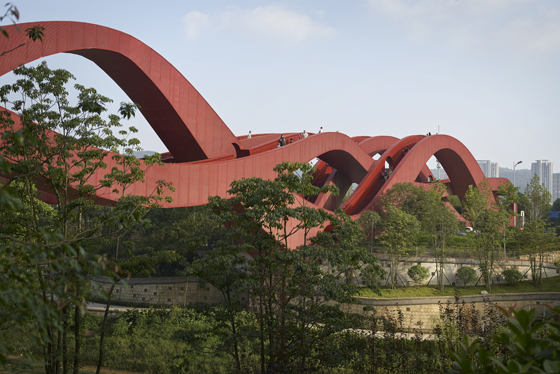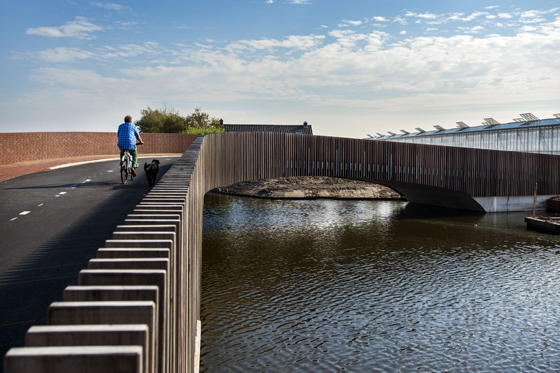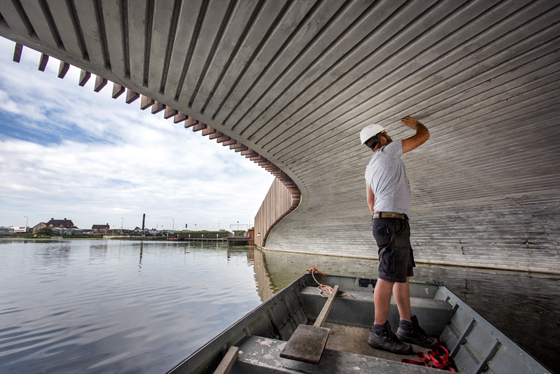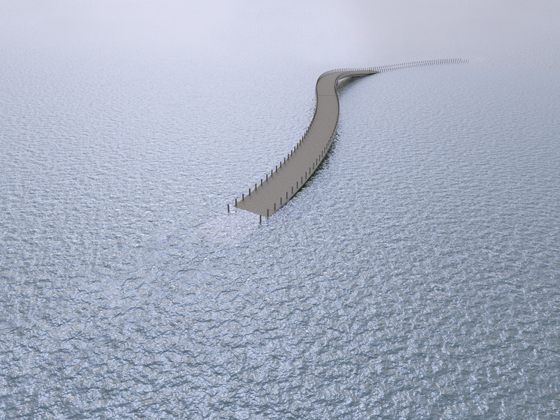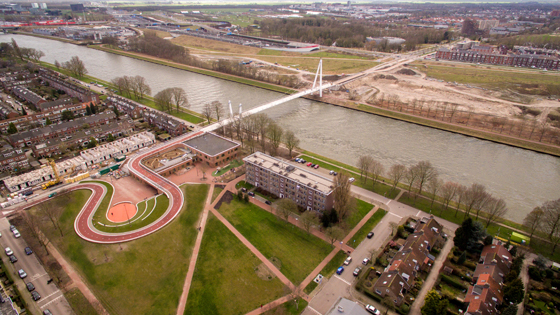Joint ventures: NEXT architects
Text by Madeline Bouton
Berlin, Germany
22.11.17
Amsterdam- and Beijing-based office NEXT architects discuss their various bridge projects, including their WAF-nominated Lucky Knot structure in China, and how infrastructural interventions should connect communities – literally and metaphorically.
"NEXT connects. It’s not only about the connection from A to B, but also connecting people to each other," says Michel Schreinemachers, partner at NEXT architects Amsterdam. Photo: Courtesy of NEXT architects

"NEXT connects. It’s not only about the connection from A to B, but also connecting people to each other," says Michel Schreinemachers, partner at NEXT architects Amsterdam. Photo: Courtesy of NEXT architects
×Architonic caught up with Michel Schreinemachers, partner at Dutch architectural office NEXT, at this year's of the World Architecture Festival in Berlin to talk about the engineering challenges and creative opportunities of designing bridges.
Congratulations on making the WAF shortlist with Lucky Knot bridge! How did you square the structure's engineering requirements with its expressive form? Which did you consider first – the utilitarian or the rhetorical?
We knew the bridge had to cross the water and connect at three points – at the riverbank, the street level, and the ring road. To these multiple spans, we added cross connections, which ultimately informed the bridge’s shape and won us the brief. The mayor chose the design because it refers to a Chinese knot, a symbol of safety, prosperity and fortune. It registers immediately as something positive.
While connecting multiple spans from different heights, the resulting form of Lucky Knot bridge in Changsha (CH) also references traditional Chinese knotting art. Photos: Julien Lanoo
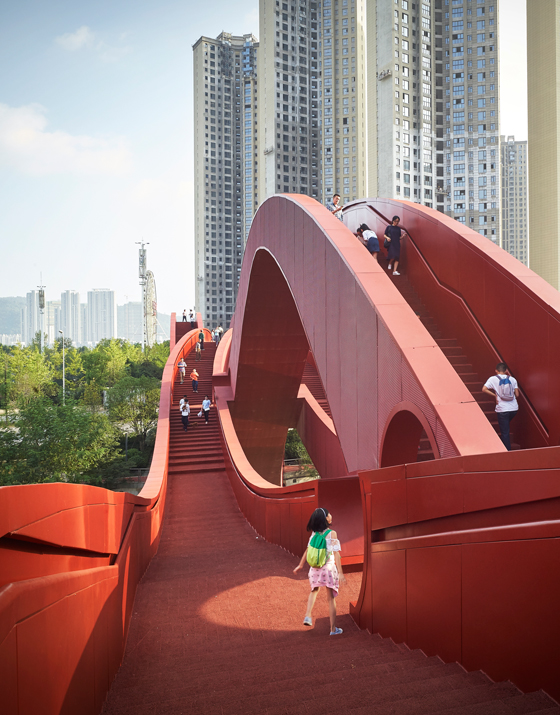
While connecting multiple spans from different heights, the resulting form of Lucky Knot bridge in Changsha (CH) also references traditional Chinese knotting art. Photos: Julien Lanoo
×NEXT has realised a number of bridges, both in the Netherlands and around the world. Was it conscious decision to pursue this kind of infrastructural project?
Yes and no. Early on, we entered a competition for two small bridges in the east of Holland and won. Our design fit the local community and the area’s ecology. Since then, we’ve always looked closely at a project’s surroundings. We always start with context. That’s true of bat bridge, the Citadel Bridge… also Lucky Knot; its design cannot be applied to any other context.
Often bridges should be much more modest than Lucky Knot. There are certain contexts where a bridge should just be functional. Following Lucky Knot’s success, we’ve had to show our bridge portfolio and explain that as architects, we don’t just make bold statements.
Working with ecologists, NEXT engineered “bat bridge” to provide roost for local bat species. Built on a floodplain, the Citadel Bridge is partially submerged few days a year. Photos: Raymond Rutting (1, 2), Rutger Hollander (3, 4)
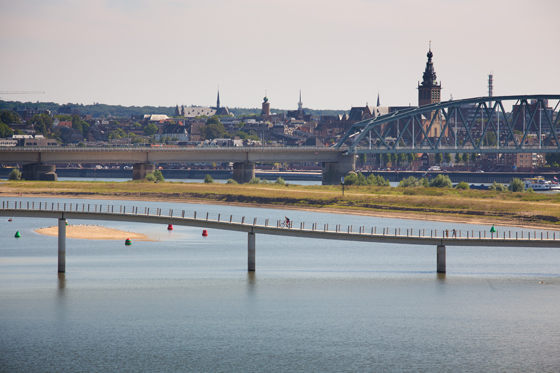
Working with ecologists, NEXT engineered “bat bridge” to provide roost for local bat species. Built on a floodplain, the Citadel Bridge is partially submerged few days a year. Photos: Raymond Rutting (1, 2), Rutger Hollander (3, 4)
×What would be your fantasy bridge project, if you could connect any two locations?
We worked on proposal for a bridge park between Anacostia and Capitol Hill in Washington DC. To cross over the Anacostia River, you’d have to walk through the park and exit again. Though the project was never realised, I think it was poetic. It was about the local communities.
That’s the most rewarding part of designing bridges – adding value to a community. That’s our biggest goal… NEXT connects. It’s not only about the connection from A to B, but also connecting people to each other.
The 110-metre long Dafne Schippers Bridge in Utrecht connects diverse communities from a local school, public park and a popular cycle route with a singular flowing design. Photos: Jeroen Musch
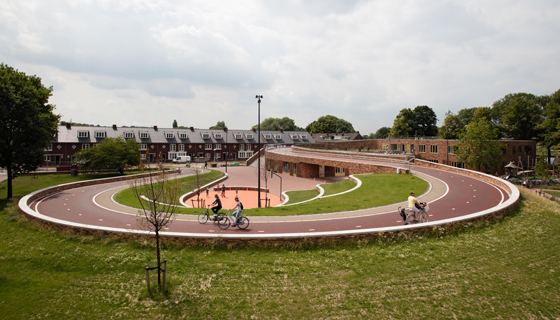
The 110-metre long Dafne Schippers Bridge in Utrecht connects diverse communities from a local school, public park and a popular cycle route with a singular flowing design. Photos: Jeroen Musch
ש Architonic

